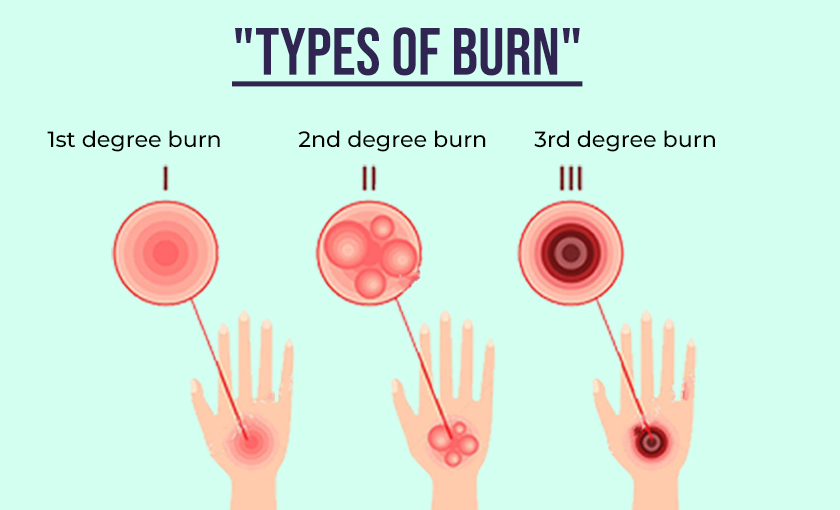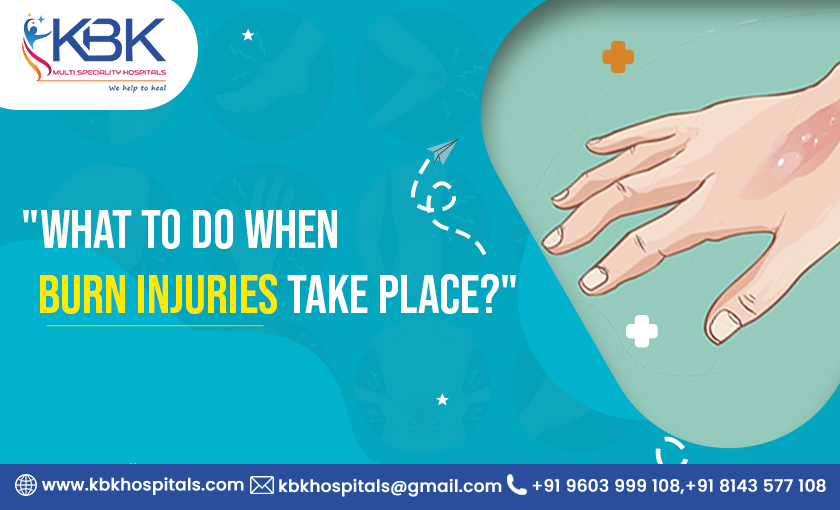Introduction:
Do you know what to do when a burn injury takes place? It’s an unfortunate accident, but it happens. Knowing how to act and react properly is essential for providing the best care for those involved. Whether from heat or chemicals, burn injuries can be extremely serious injuries with potentially lifelong effects if not treated correctly. So you should know how to deal with these types of burn injuries. Here are the key facts and details about different types of burns and their necessary treatment according to best practices. You’ll learn what steps need to be taken to provide immediate relief and future prevention measures.
What is a burn?
A burn is a type of injury to the skin, or other body tissue, caused by heat, electricity, radiation, friction, or chemicals. Burns can cause varying degrees of damage depending on the severity. Minor burn injuries may cause redness and some swelling, whereas more severe burns may cause blistering and extensive skin damage. The main treatment for a burn is to keep the wound cool and dry until it has been fully assessed by a medical professional. Depending on the degree of the burn, additional care may be required for a full recovery. It is important to seek medical care for any burn immediately.
Common facts about the burn:
Burn injuries are an incredibly common issue. They are the third leading cause of accident-related death in all countries. It affects people of all ages. Various factors are there that can cause this burn injury. There is more risk for children to get accidental burns. Fortunately, a wide range of treatments is available for burns. Skin grafts or other reconstructive surgeries are available to treat severe burn cases.
Types of burn:
Based on severity, healthcare providers explained it into three types. First, second and third degrees, and each degree explains the severity of the skin damage. The first degree is minor, but the third is the most severe. Below details are the symptoms that show the degree of burn injuries.

First-degree burn:
First-degree burn injuries causes mild skin damage, such as sunburn. It only damages the upper layer of the skin. The skin turns red color and gives more pain with minor swelling. It takes 7-10 days to heal, and the affected area peels. If the affected area is over three inches, you should visit the doctor.
Home care is another option for treating first-degree burns. You can soak the wound for five minutes in cold water for a small area burn. You can soothe your skin using aloe vera gel or some antibiotic ointment on the affected area. You get a quicker result when you start treating this burn.
Don’t use ice and any cotton balls on that burn area. The small cotton fibers can cause infection, and you will get more pain then.
Second-degree burn:
Second-degree burns are more dangerous than first-degree. The top and lower skin layers are affected by this second-degree burn. Skin becomes redder and swollen with more pain. Blisters can occasionally break open, giving a burn a wet surface. Over time, a thick, soft tissue that resembles a scab may form over the wound.
The wound becomes so soft and wet. To stop infection, first, clean that area and bandage that properly.
It takes a longer time to heal from second-degree burns. The healing time depends upon the blisters. If the blisters are worse, then skin grafting can fix the issue.
Before reaching the hospital, start your treatment from home. You can place that affected area below cool running water for a minimum of 15 minutes. Then you can apply antibiotic cream to your skin.
Third-degree burns:
Third-degree burns are the most severe, as they affect all three skin layers. This burn damages the nerve endings, destroying the sweat glands and hair follicles. Third-degree burns are so painful. The burn area skin looks black or red with a leather touch feeling. In some conditions, skin becomes waxy with a white color appearance. Many doctors prefer surgery to treat these third-degree burns. There is no perfect time limit to healing burns in this period.
If you get this third-degree burn, don’t go through any home treatment and go to the hospital immediately.
How to avoid all degrees of burns?
The best way to avoid burns is to stop them from happening. Some jobs are where there is a maximum chance of burns, but most burn cases happen at home only. We all know that burn is also an accidental case. By following these steps, you can reduce the chances of burns.
- Always set the water heater temperature below 100 degrees Celsius.
- Before bathing your child, test the water temperature.
- Keep all chemicals and lighters in a safe place only.
- Every 10 years, replace the smoke detectors.
- Wear gloves before using any chemicals.
How to diagnose burns?
Your healthcare provider first examines the burn to check the stage of the burn degree. They make an educated guess as to the depth and proportion of the body that the burn will affect. The burn stage is then categorised as follows.

The minor stage:
First-stage and second-stage degree burns go under the minor stage. This minor stage burn heals rapidly, and the patient rarely needs hospitalization. The burn covers less than 10% of the whole body.
The moderate stage:
If the patient’s body symptoms show second-degree burns and the body is covered with more than 10% burns, then it is a moderate stage. Patients need time to heal from this through the doctor’s treatment.
The severe stage:
Third-degree burn is the severe stage. It is a severe case if 1% or more of the body is covered with third-degree burns. Doctors may go with skin grafting or different surgery to heal the patient’s skin.
Management and treatment of burn –
Depending on the severity, the burn treatment varies. Just clean the burn area and cover it with proper bandages to manage the burn. Check that burn area regularly.
If you find any infection, then consult with your doctor.
Treatment as per the burn types:
- To treat the first-degree burns, place it under cool running water, but don’t use any ice there. If you have any sunburn, you can apply aloe vera gel or any sunscreen. You can use antibiotic cream over the affected areas if the burn happens through any thermal.
- As per the doctor’s prescription, you can use a stronger antibiotic cream to treat second-degree burns. That will help to kill bacteria and reduce the chances of infection.
- To treat third-degree burns, you need to stay at the hospital only. To treat the injured area, doctors may do skin grafting. Using healthy skin from another area of the patient’s body, the doctor replaces the damaged tissue from the affected location.
Conclusion:
Burn is an accidental case. Children and older adults get affected mostly by burns. All kinds of burns need proper treatment to stop infection growth and get earlier healing. We have experienced professionals who check your every issue and help to heal earlier with their treatment. You can consult with KBK multispecialty hospital if you need burns treatment.
FAQs –
1. How long does it take for burns to heal?
It will take time for the scars to heal. First- or second-degree burns to the skin will take one to two weeks to heal. The skin colour may alter, and healing may take longer in some cases of second-degree burns. Third-degree burns can heal for unlimited time since they require more.
2. Can a burn be permanent?
The scar tissue diminishes over time if the burns only affect the skin’s surface layer. Although your skin heals more quickly, the scar takes time to disappear. Permanent scarring results from damage to the deeper layers of the skin. These stains appear thick, and their appearance is undesirable. It takes more time to heal. To address this issue, some medical professionals advise skin transplantation.
3. What are the types of burn injury?
As per the burn skin condition, medical professionals make three types of burn injury. One is first-degree burn, which is not so dangerous and takes 7-10 days to heal. The second is a second-degree burn that causes swelling skin and much more pain. It takes time with proper treatment to heal. The third-stage burn is more dangerous, and affects nerves also. It needs more time and some special treatments to heal.
4. What is a third-degree burn injury?
Because it affects all three layers of skin, a third-degree burn is more severe. With fatty tissue, it entirely obliterates the skin’s outer layer. Your skin will seem charred-black, dry, and leathery after a third-degree burn, although it may not ache immediately. Serious burns like this one need medical attention from a professional.
5. Can burn damage the skin?
In some cases, if the burn is severe, the skin becomes damaged for a long time. The doctor suggests going with skin grafting to fix the skin. If it is a first-stage degree burn, the skin needs time to recover, but it will not cause any damage to any skin. With proper treatment, a patient can get healed from this by making their skin perfect.

